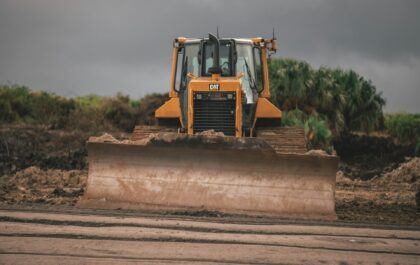Defining Modern Coastal Living
The concept of modern coastal living goes far beyond sun, sand, and sea breezes—it’s an increasingly sophisticated blend of contemporary design, sustainability, and a deep connection to nature. Today’s coastal homes are defined by open, airy layouts, an emphasis on natural light, and a seamless connection between interior spaces and the surrounding landscape. When considering properties like homes for sale in Brigantine or residences in other coveted shoreline areas, homebuyers consistently seek features that make everyday living feel like a retreat.
Gone are the days when a coastal home was synonymous with flimsy beach shacks or nautical kitsch. Instead, there’s a growing desire for architecture that’s both timeless and thoroughly modern. This shift is not just aesthetic—it’s practical. Coastal homebuyers increasingly expect their properties to incorporate durable, weather-resistant materials and thoughtful space utilization for hosting family or finding moments of solitude. A blend of minimalist lines, eco-friendly choices, and direct outdoor access enables these homes to function as hubs for well-being and relaxation throughout the year, transcending seasonal escapes to become primary residences for a diverse range of homeowners.
Influences Driving the Coastal Market
The profile of today’s coastal homebuyer is more varied than ever, shaping the housing market in exciting ways. The flexibility offered by remote and hybrid work has allowed many professionals to leave high-density urban centers in favor of scenic, tranquil shores. In fact, recent news on migration trends to coastal areas has highlighted a remarkable 23% surge in coastal migration through 2023, driven by workers and families seeking a better balance between work and life. This migration isn’t just changing who lives along the coast—it’s sparking new demand for amenities and services tailored to year-round living.
Retirees and empty-nesters are also injecting fresh energy into these markets, often seeking low-maintenance properties with proximity to recreation and community events. The result is intergenerational neighborhoods where tech entrepreneurs and retirees live side by side, eager to shape a welcoming, future-focused community. This demographic evolution is prompting developers to create more flexible floor plans, versatile gathering spaces, and walkable environments that serve a diverse cross-section of residents.
Buyer Preferences and Design Trends
Coastal homebuyers today are savvy and particular. Their preferences are steering architecture and interior design toward spaces that foster connection, comfort, and efficiency. Open-plan layouts that let family and friends flow seamlessly from living areas to kitchens to outdoor decks remain in high demand. Large windows and sliding glass doors maximize spectacular views and promote abundant daylight, helping to bring the outside in and keep interiors feeling fresh and vibrant.
Popular Design Choices for Coastal Homes:
- Retractable glass walls and panoramic doors transform rooms into breezy indoor-outdoor sanctuaries
- Durable flooring options like luxury vinyl plank and porcelain tile for easy cleanup after a beach day
- Outdoor kitchens, BBQ spaces, and covered lanais designed for alfresco dining and sunset socializing
- Modern minimalism balanced with textures—think natural woods, woven rugs, and eco-friendly surfaces
Many sought-after coastal homes now feature roof decks or terraces, allowing residents to enjoy water views from nearly every part of the residence. Across markets, buyers are opting for lighter color palettes and unfussy décor that emphasize serenity and flexibility. This fresh approach often results in layouts that work as well for entertaining a crowd as for a quiet evening at home.
Sustainability and Coastal Resilience
With rising sea levels and stronger storms on the horizon, resilient coastal homebuilding is more critical than ever. Homeowners and developers have adapted quickly, prioritizing green practices to strengthen homes against severe weather and minimize their environmental footprint. Elevated foundations, durable siding materials, and impact-resistant windows are now standard in many newly constructed homes, helping them withstand flooding, wind, and salt air.
Eco-conscious design is about more than protection—it’s about smart use of resources. Solar panels, geothermal systems, and on-demand water heaters help lower utility costs while supporting broader environmental goals. In fact, recent data shows that energy-efficient upgrades can boost resale value by up to 7% in popular coastal markets. New insurance policies and building codes are also evolving, often rewarding resilient homes with lower premiums and greater peace of mind for owners. These advancements demonstrate coastal communities’ commitment to protecting both their properties and the surrounding natural beauty.
Technology & Smart Home Features
As home technology continues to grow more sophisticated, coastal residences are at the forefront of smart living. Modern systems such as remote security cameras, programmable thermostats, and water leak sensors are especially valuable in this context, where many second homes may remain vacant for extended periods. Residents appreciate systems that allow them to check on property conditions, manage temperature and humidity, and respond quickly to unexpected weather events from anywhere in the world. According to Investopedia, smart homes are residences equipped with interconnected devices that automate and remotely control household systems, which is especially advantageous for managing properties in dynamic coastal environments.
The integration of energy-saving devices has also become a key selling point. Solar-ready roofing, integrated electric vehicle (EV) charging stations, smart irrigation systems, and lighting systems are now expected features in luxury listings. These technologies not only contribute to a greener lifestyle but also save time and money, helping to ensure that sustainable coastal living is both convenient and comfortable for future generations.
Community and Lifestyle Focus
Coastal living isn’t just about the private home—it’s just as much about the community that surrounds it. Buyers seek out neighborhoods that support active, outdoor-oriented lifestyles through their amenities. Proximity to marinas, nature preserves, and walking trails ranks high on buyers’ lists, alongside village centers with coffee shops, markets, and places for neighbors to connect.
The newest generation of coastal developments emphasizes inclusivity and social engagement, with shared fire pits, playgrounds, and community gardens. As shared by expert opinions on luxury coastal real estate, these lifestyle-driven features are no longer “extras”—they’re often deal-makers for today’s buyers. Involvement in local arts, fitness, and environmental initiatives further strengthens neighborhood bonds, creating vibrant, resilient coastal towns that are defined by both natural assets and a strong sense of community.
Affordability: Challenges and Opportunities
One challenge that can’t be ignored is affordability. As demand has escalated, home prices in many desirable coastal zip codes have climbed faster than the national average. This has made it more difficult for some families, young professionals, and essential workers to break into these markets. To counterbalance, city planners and local governments are promoting a variety of solutions aimed at keeping communities diverse and accessible.
Ideas for Balancing Affordability and Appeal:
- Opting for newly emerging neighborhoods or “hidden gem” markets adjacent to prime coastal hotspots
- Pursuing co-housing, duplexes, or multi-generational homes for cost-sharing and flexibility
- Utilizing government-down payment assistance programs created to encourage year-round homeownership
- Collaborating with builders on creative design solutions that maximize value, such as adaptable spaces or accessory dwelling units
These tactics provide more people with a path to coastal living, ensuring communities remain vibrant and inclusive, with residents of diverse ages and backgrounds.
Looking Ahead to the Coastal Future
Coastal living is poised for another decade of transformation, driven by evolving technology, shifting buyer expectations, and evolving environmental realities. Flexible home layouts, continued adoption of sustainability practices, and increased support for community engagement will shape the new wave of coastal homes and neighborhoods. It’s an exciting era—one where homebuyers play an active role in redefining what it means to thrive by the water’s edge.
Whether looking for an all-season residence, an investment property, or simply inspiration for a future dream home, it’s clear that the connection between buyers and local communities will remain essential. By embracing innovation and working together to protect both property and the planet, coastal living can truly be as dynamic and sustainable as the landscapes it celebrates.
Related posts
More Reads
Forging a Path in Construction: Starting Strong in Heavy Equipment Operation
Starting a new career can open doors to financial security and long-term satisfaction—especially in a fast-growing, high-demand field. For those…
ADHD Treatment in Austin, Texas: A Comprehensive Guide to Support, Strategies, and Solutions
Attention-Deficit/Hyperactivity Disorder (ADHD) is one of the most commonly diagnosed neurodevelopmental conditions, affecting both children and adults across the United…



